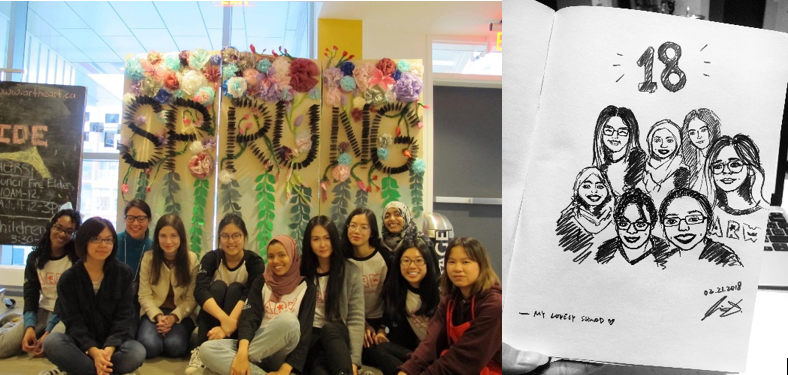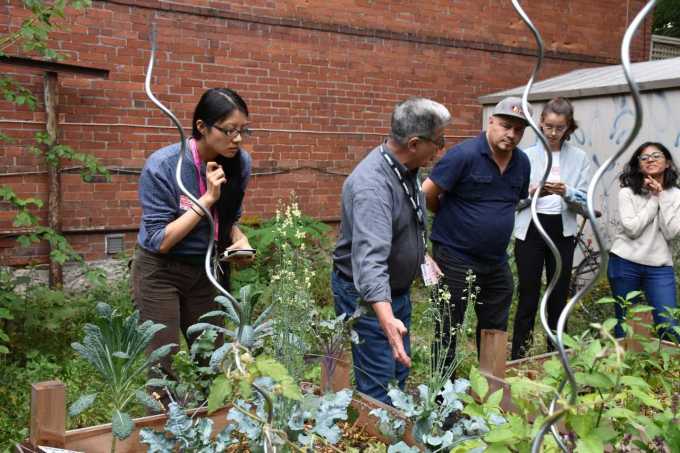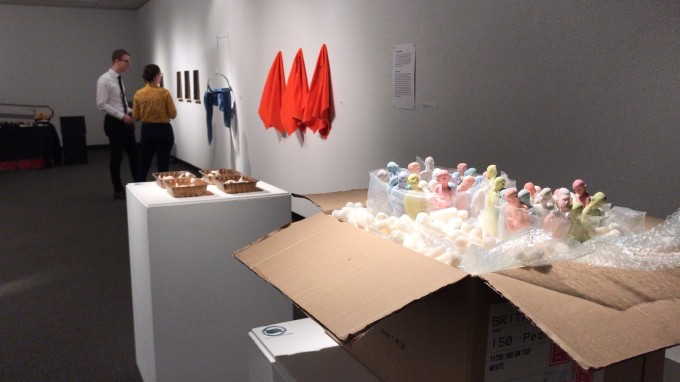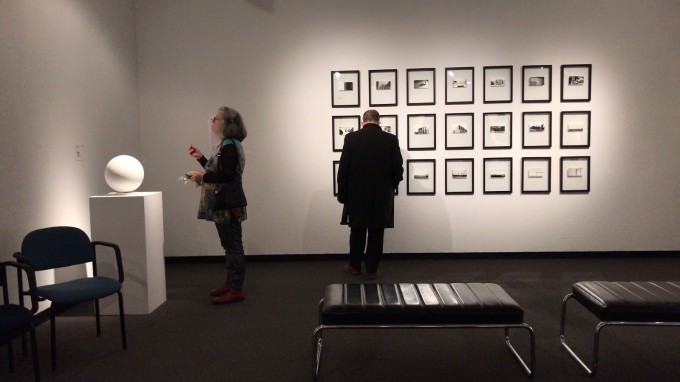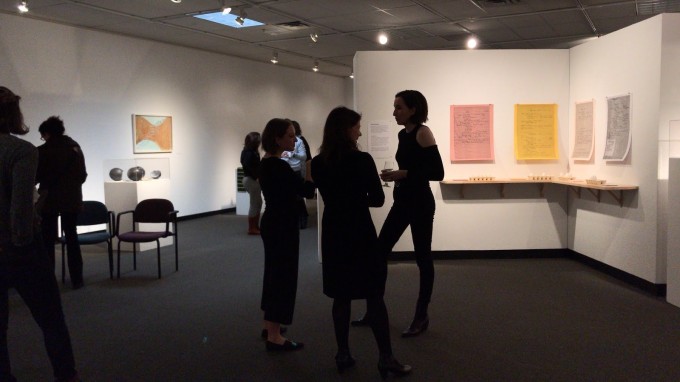Iranian and Afghan artists participating were asked to share and digitally manipulate photographs from their personal archives at Niagara Falls alongside family and chosen family. All works are mixed media, using digital manipulations to complicate relationships with “home” and the nostalgia associated with Niagara Falls as a place for affirming our (Iranian and Afghan migrant/refugee) belonging in Canada. Zahra Rajabi is a product designer fascinated by what constitutes belonging in the digital world. Rajabi pairs images of popular Canadian landmarks alongside family photographs in Afghanistan to think through the ways that “home is (re)created through art”. Ferozan Nasiri is an Afghan community organizer and educator interested in the ways that members of the Afghan diaspora use different modes and mediums to theorize, articulate, and represent their lived experiences locally and globally – especially through storytelling. Nasiri uses Afghan textiles as the backdrop of her work to evoke a feeling of familiarity for Afghan audiences engaging with her work. Through her artist statement Nasiri pays tribute to complicated relationships to belonging which are “as complex and non-linear as our distinct experiences with migration.” Melika Hashemi is a multidisciplinary artist whose projects are informed by her social and pedagogical concerns regarding marginality and resistance (and grounded by her hyphenated experiences with Iran and Canada). Through works such as Ayeneh Kari (2019), Hashemi transforms her family photographs at Niagara Falls into (digital) traditional Persian mirror handiwork. Swarm is an anonymous street artist based inTiohtià:ke (Montreal) and whose primary medium is wheatpaste and graffiti. Swarm’s artistic contribution included a digital manipulation of the Canadian flag, hung upside down to signal the distress and urgency surrounding Canada’s contribution toclimate change via settler colonialist resource extraction that has been ongoing since the first waves of colonization.
The collaboration between Afghan and Iranian artists grew organically as we already shared space in our movements against islamphobia, against sexism, against racism, and against other structural conditions which shape our lives and the lives of those we love. More specifically, we shared space in our movements against sanctions (which are mostly discussed in relation to the flow of Iranian products but) which restrict the mobility and livelihoods of people first and foremost including for Afghan people. While cultural and linguistic commonalities acted as a starting point for our collaborative project, we attempted to ensure that we centred our own entry points rather than flattening or conflating Afghan and Iranian experiences especially because we all held different relationships to migration, class, faith, and shadeism. The significance of Niagara Falls for new immigrant and migrant communities is not limited to Afghan and Iranian diasporas however we centred what we know to strengthen our work and ensure we were only speaking from lived experiences.
Note: this question is hard to answer without placing blame/shame on community members who are often doing their best in the face of overt racism, microagressions, delayed visa/immigration applications, etc. but anti-Blackness, anti-Indigeniety, and attachments to neoliberal notions of productivity (rooted in racial capitalism and property rights facilitated through theft of Indigenous land) continue to be prevalent in our respective diasporas. A lot of artistic practice also continues to think through the “٣rd space” that first and second generation Iranian and Afghan people navigate without asking: “what are the limits of making claims for belonging on stolen land?” We are invested in questioning how diasporic claims for static and grounded relationships to place are harmful in reproducing notions of time as linear and more broadly, assimilating into the white settler state which isn’t broken but rather built to operate at the expense of Black, Indigenous, and racialized people. In producing her works, Ferozan Nasiri notes that she thought about an imaginary thread between her family photographs and ijaza (consent) in relation to the land. She insists that consent is a part of a dialogue that should have a place in the collective consciousness of the Afghan diaspora, especially as “we navigate, recreate, and speak on different spaces of belonging here.” While we are concerned about the lack of discussions around settler colonialism and anti-Blackness in Iranian and Afghan communities, we are indebted to the mobilizing happening across Turtle Island by platforms including (but most definitely not limited to) Canadian Roots Exchange, Diaspora Express, and LAL .
Melika Hashemi draws from The Audre Lorde Questionnaire to Oneself (1980) to grapple with the limits of language and feelings of unbelonging which we do not always yet have the words for. Diaspora Express makes conversations on home-making and settler colonialism accessible by asking its members “what brought us to this land and what can we do in solidarity with rightful owners of this land?” While many Iranian politicians stand by a Prime Minister who has continuously failed to seek Indigenous peoples consultation and who upholds a history of land grabbing by the Canadian nation-state (including through pipeline expansions and tar sands extraction), we look towards futurities beyond surface level representation and towards honouring treaties and enacting different ways of inhabiting and most importantly, sharing space for ourselves and the generations to come.
In short, the most concrete piece which inspired this exhibit is the photographs that each of us have at Niagara Falls and the complicated relationship to home that we continue to think through/carve out.

